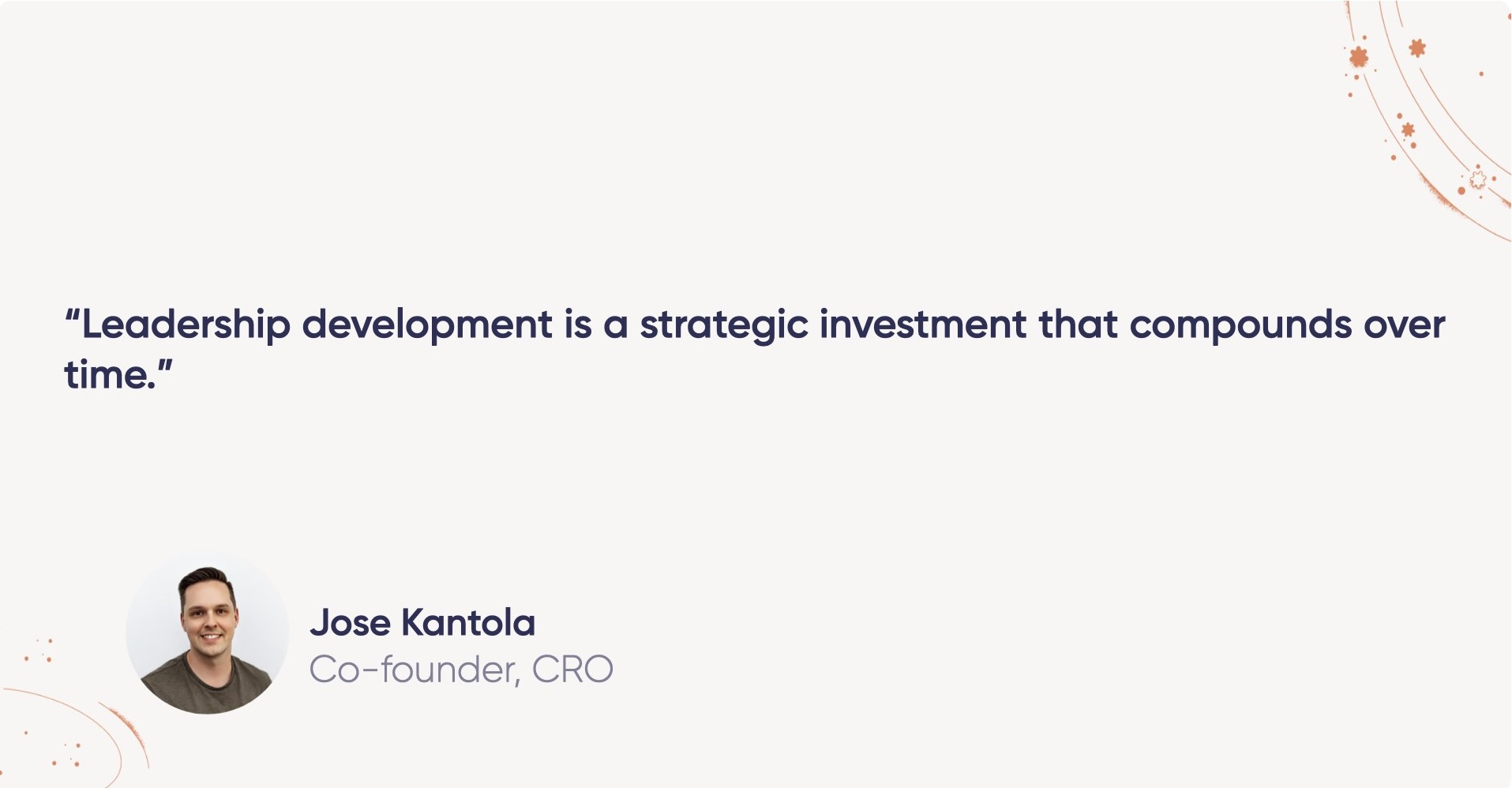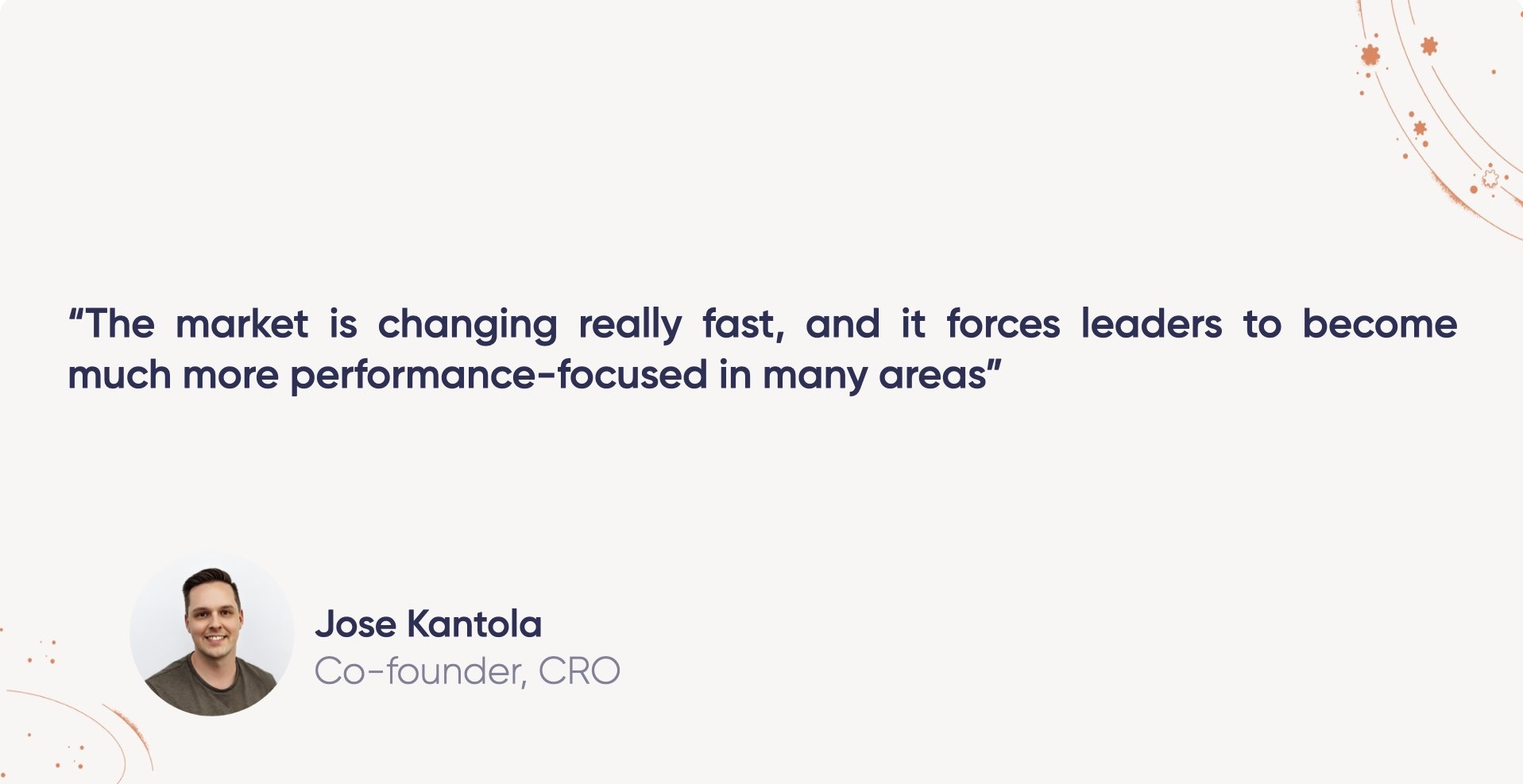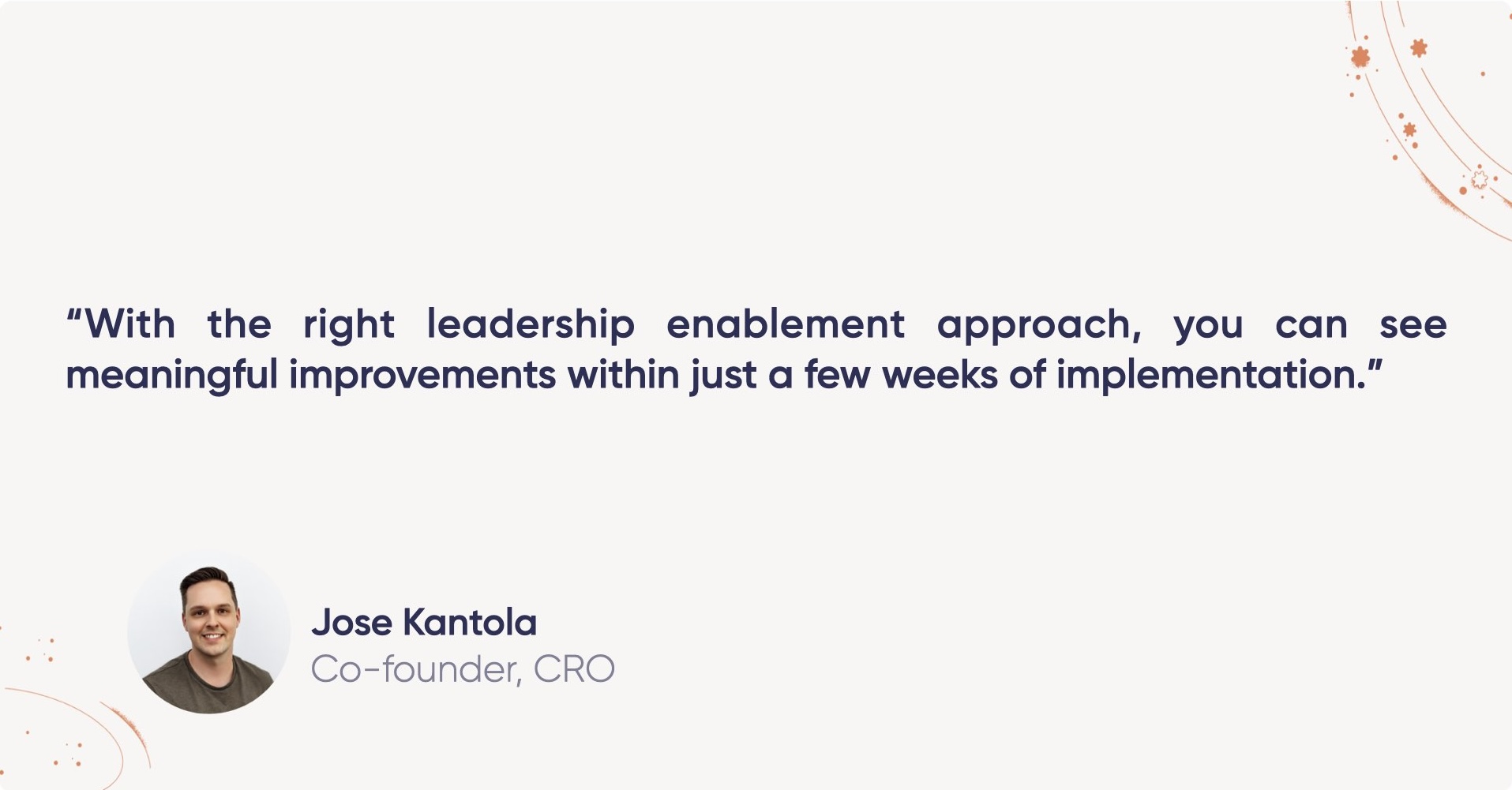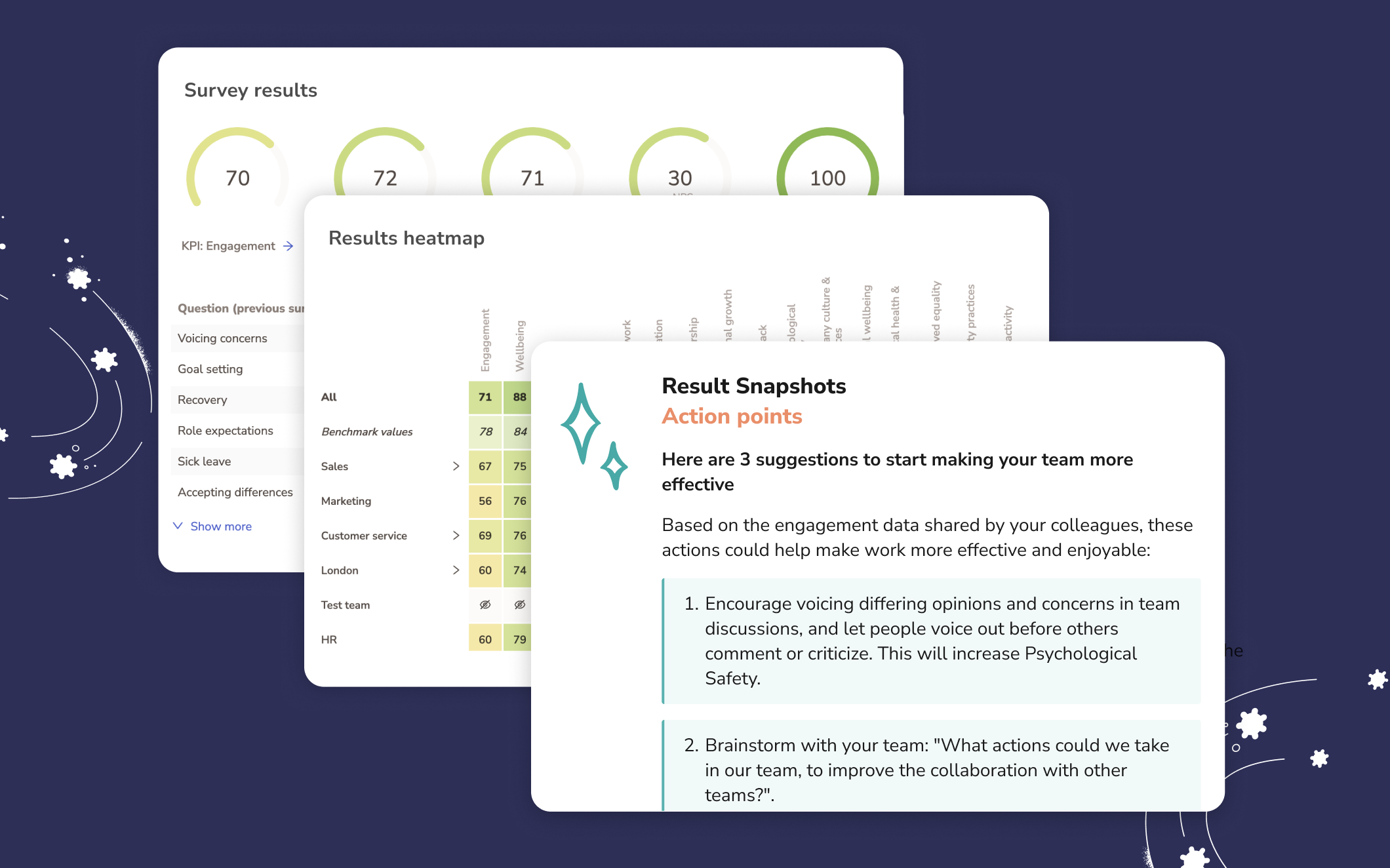Why Is Leadership Development Important? 5 Key Reasons
October 24, 2025I made a costly mistake early in my career. I promoted our best account manager to team lead without any leadership training. Within months, two talented team members were struggling with motivation, team morale tanked, and our carefully built team started to dissolve.
I made a costly mistake early in my career. I promoted our best account manager to team lead without any leadership training. Within months, two talented team members were struggling with motivation, team morale tanked, and our carefully built team started to dissolve.
That experience taught me a hard lesson: professional brilliance doesn’t automatically translate to leadership ability.
Over the years, I’ve worked with dozens of companies as they scaled from small teams to hundreds of employees across multiple countries. I’ve watched the same pattern repeat itself. Individual contributors get promoted based on their current performance, then struggle or fail in leadership roles.
So why is leadership development important? Let me share what I’ve learned from years of helping organizations build better leaders.
5 Reasons Why Leadership Development Is Important
Leadership development is the process of building the skills, knowledge, and behaviors that help leaders become more effective in their roles. It’s an ongoing journey of growth and improvement.
When done well, leadership development transforms how your organization operates. Here’s why it matters so much:
1. It Directly Impacts Employee Retention
The number one reason people leave companies isn’t compensation. It’s poor management. Managers are responsible for up to 70% of the variance in the employee engagement scores.
I’ve seen this play out dozens of times. A talented employee joins, excels in their role, then quits within a year. The exit interview reveals the same story: their manager didn’t support them, didn’t communicate clearly, or didn’t help them grow.
Each of those exits cost us dearly. Recruiting costs, onboarding time, lost productivity, and knowledge that walked out the door. Conservative estimates put the cost of replacing an employee at their annual salary. For senior roles, it’s often higher.
Leadership development reduces turnover. When leaders know how to support their teams, set clear expectations, and provide growth opportunities, people stay.
In my organization, teams with well-developed leaders had retention rates 20-30% higher than teams with underdeveloped leaders. That difference saved us millions in replacement costs.
2. It Multiplies Performance Across the Organization
One great individual contributor impacts their own work. One great leader impacts the performance of their entire team.
When I had 10 people in my team, I could influence all of them directly. When we had grown to 600 people, that was impossible. I needed leaders who could drive performance in their teams.
Leaders who receive proper development:
- Set clearer goals and expectations
- Provide better feedback and coaching
- Remove obstacles that slow their teams down
- Make faster, smarter decisions
- Hold people accountable while supporting their growth
This multiplies across the organization. If each leader improves their team’s performance by 10%, and you have 50 leaders, the organizational impact is massive.
I saw this transformation happen. Teams that had been underperforming for years turned around within months when we developed their leaders properly.
Explore Leadership Enablement
Turn insights into action with Teamspective's Leadership Enablement solution.
3. It Builds Collaboration and Breaks Down Silos
As organizations grow, they naturally develop silos. Teams focus on their own goals and lose sight of how they connect to other teams.
Fortunately, not all silos are bad. However, when the degree and nature of these silos grow unmanageable, they create bottlenecks, duplicated work, and misaligned priorities. I’ve watched projects fail because two teams weren’t talking to each other, even though they were working on related problems.
Leadership development that focuses on collaboration skills changes this. Leaders learn to:
- Build relationships across departments
- Align their team’s work with other teams’ priorities
- Identify and resolve cross-team conflicts
- Create connections that wouldn’t exist otherwise
When you invest in developing these skills, collaboration improves dramatically. Projects move faster. Teams share knowledge more freely. The organization becomes more than the sum of its parts.
4. It Prepares the Organization for Growth and Change
When I started scaling my team, I assumed we could just keep doing what worked at 20 people. That was wrong.
What works at 20 people breaks at 50 people. What works at 50 people breaks at 200 people. Each growth stage requires different leadership capabilities.
Leadership enablement prepares your organization for what’s coming. It builds the skills leaders will need before they need them.
The same applies to change. Whether it’s a new strategy, a market shift, or a restructuring, leaders need to guide their teams through it.
Organizations with well-developed leaders navigate change much better. Their leaders can explain the why, address concerns, and keep teams focused during uncertainty.
Without leadership development, change initiatives fail. People resist, productivity drops, and the organization struggles.
5. It Creates a Competitive Advantage
Your competitors can copy your products, your pricing, and your strategies. But they can’t easily copy your leadership culture.
Organizations with strong leadership development create a sustainable advantage. They:
- Execute faster because leaders make better decisions
- Adapt more quickly to market changes
- Attract better talent because people want to work for good leaders
- Develop future leaders from within instead of hiring externally
Leadership development is a strategic investment that compounds over time.

Key Leadership Development Areas Companies Should Focus on Today
Not all leadership development initiatives deliver the same value. Based on what I’ve seen across organizations, here are the areas that matter most right now:
Becoming Data-Driven
Too many leaders still make decisions based on gut feeling or assumptions. When data contradicts their beliefs, they dismiss it.
I’ve been in meetings where a leader says “that’s not how I see it” in response to clear engagement survey results. Their team is telling them there’s a problem, but they won’t accept it.
The best leaders use data to test and refine their understanding. They ask: “My team experiences this differently than I do. Why? What am I missing?”
Leadership development needs to teach:
- How to collect and interpret team data
- How to accept feedback that challenges personal assumptions
- How to make decisions based on evidence, not just intuition
- How to track whether actions are producing desired results
This shift to data-driven leadership makes every other leadership skill more effective.
Having Hard Conversations
The pressure to maintain performance in competitive markets means leaders need to have more difficult conversations than ever before.
Conversations about:
- Underperformance that needs to improve or result in consequences
- Behavior that’s damaging team culture
- Unrealistic expectations that need to be reset
- Role changes or restructuring
These conversations don’t come naturally to most people. I’ve seen leaders avoid them for months, hoping problems will resolve themselves. They never do. The problems just get worse.

This is one area where you can’t just give leaders a training session and expect results. It requires practice, coaching, and ongoing support.
Aligning with Company Values and Leadership Principles
Before you develop any specific skills, leaders need to understand what good leadership looks like in your organization.
Are leaders expected to be directive or facilitative? Should they solve problems for their teams or coach teams to solve problems themselves? How much autonomy should they give?
Without clear answers, leaders develop inconsistent approaches. This confuses employees and creates friction.
I learned to start leadership development by defining and teaching our leadership principles. This gave everyone a common framework.
Every leader needs to understand:
- What behaviors the organization expects from leaders
- How these principles connect to company values
- How to apply these principles in real situations
- How leadership principles should guide hiring and promotion decisions
This alignment creates consistency across the organization.
How to Measure the Success of Leadership Development Initiatives
Many companies run leadership programs without knowing if they work. They’d get good feedback scores, declare success, and move on.
But when you start actually measuring impact, you realize that half of these programs aren’t delivering any measurable benefit.
Here’s how to measure leadership development properly:
Start with Participant Feedback
This is the easiest and earliest indicator. After any development program, ask participants:
- Was this relevant to your current challenges?
- Did you learn something actionable?
- Will you use this information in the next two months?
If leaders consistently say “no” to these questions, the program isn’t working. You’re wasting time and money.
Good feedback scores don’t guarantee impact, but bad feedback scores definitely predict failure.
Track Team-Level Metrics
The real test is whether the leader’s team improves. Look at:
- Employee engagement scores
- Retention rates
- Performance ratings
- Collaboration effectiveness
- Achievement of team goals
Compare these metrics before and after the leadership development. You should see improvement within 3-6 months.
For example, if you train leaders on performance management, their teams’ performance ratings should improve. If you train on communication, engagement scores should go up.
If team metrics don’t improve, the development isn’t working.

Measure Behavior Change
Development should change how leaders behave. You can measure this through:
- 360-degree feedback before and after development
- Observation of leadership behaviors in meetings
- Frequency of one-on-one meetings with direct reports
- Quality of feedback given to team members
- Speed of addressing performance issues
The most reliable way is to gather feedback from the leader’s direct reports. They see the day-to-day behavior changes.
Look at Organizational Outcomes
For large-scale development initiatives, measure the organizational impact:
- Overall retention rates
- Employee engagement scores across the company
- Speed of execution on strategic initiatives
- Cross-team collaboration metrics
- Promotion rates from within
These take longer to move, usually 12-18 months. But they show whether leadership development is creating sustainable organizational improvement.
How Technology Can Help
Technology has transformed how companies approach leadership development. Here’s what works:
Real-Time Insights for Leaders
Leadership enablement platforms analyze data from engagement surveys, performance reviews, and collaboration patterns. They identify what each leader should focus on right now.
Instead of waiting for annual reviews, leaders get current insights about their teams. This allows them to spot problems early and address them before they escalate.
For example, Teamspective might flag that:
- Team engagement dropped suddenly in the past two weeks
- Confusion about priorities increased significantly
- Part of the team is highly engaged while another segment is struggling
- Cross-team collaboration has broken down
Leaders can respond immediately instead of discovering problems months later in an annual survey.

Personalized Recommendations
Generic leadership training assumes everyone needs the same things. They don’t.
When platforms have data about a leader’s experience, team size, performance results, and engagement scores, they can personalize guidance.
The platform automatically prioritizes the most impactful issues for each leader. Then it provides:
- Specific discussion points for upcoming one-on-one meetings
- Questions to ask in team meetings
- Coaching aligned with company leadership principles
- Resources relevant to the current challenge
This guidance is based on that leader’s actual team and situation, not generic best practices.
Support for Data-Driven Decision Making
One of the hardest shifts for leaders is becoming more data-driven. Technology helps by making data accessible and actionable.
Instead of complex dashboards that require analysis, platforms deliver insights in plain language. “Your team’s clarity on priorities has declined. Here’s why, and here’s what to do about it.”
This helps leaders trust and use data instead of dismissing it.
Seamless Data Collection
Traditional surveys are burdensome. Send an email, get people to click a link, remind them multiple times, compile results.
Platforms that integrate with Slack or Microsoft Teams make this seamless. A survey becomes just another message that takes 30 seconds to answer.
This matters because:
- Response rates increase by 50-80%
- Leaders get feedback more frequently
- The feedback is more current and relevant
- There’s less administrative burden
Continuous Development Instead of One-Time Training
Traditional training happens once. Attend a workshop, go back to work, forget most of what you learned.
Technology enables continuous development. Leaders receive relevant coaching and resources exactly when they need them.
When a leader is preparing for a performance conversation, they get guidance on that conversation. When engagement drops, they get help addressing it immediately.
This approach recognizes that leadership challenges change constantly. Support needs to be continuous, not episodic.
Conclusion
After scaling my team and helping dozens of growing businesses with their leadership development initiatives, I can answer the question why leadership development is important.
Because your organization’s success depends on your leaders’ effectiveness. Period.
Poor leaders drive away talented people, miss performance targets, create silos, and struggle with change. The cost shows up in turnover, missed opportunities, and organizational dysfunction.
Great leaders multiply performance, build collaboration, retain top talent, and adapt to change. They create a competitive advantage that’s hard to replicate.
Ready to develop leaders who drive real results? Book a demo today and see how Teamspective can transform leadership development in your organization.



